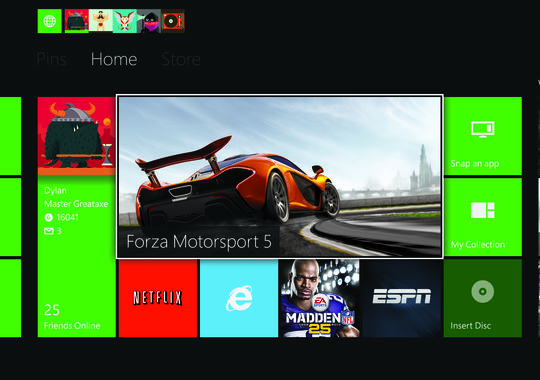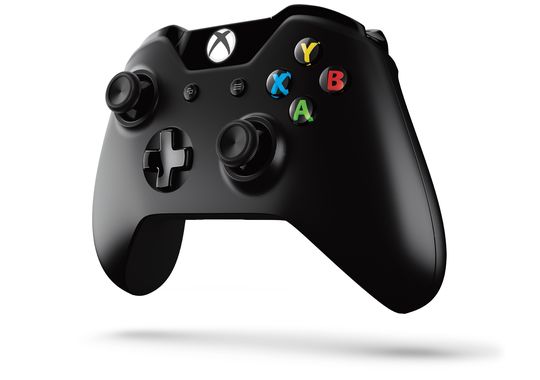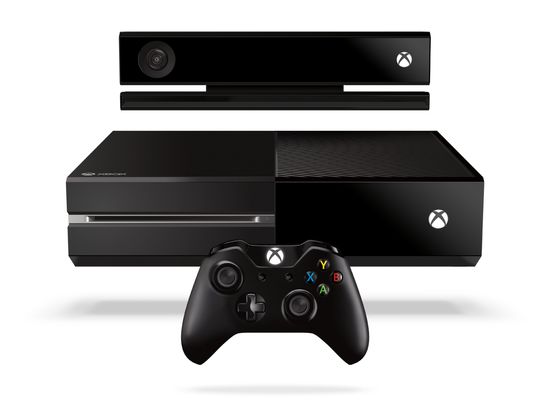Review: Xbox One makes strong play for living room
In the early days of the video game console, consumers were buying a device built with one purpose: to play games.
That mind-set started to change during the era of Sony's PlayStation 3, Nintendo's Wii and Microsoft's Xbox 360, when the inclusion of applications to listen to music, view movies and television shows and surf the Web turned video game consoles into entertainment behemoths.
Microsoft makes arguably the biggest leap toward an all-in-one entertainment future with Xbox One, a stellar system with an impressive set of features to make consuming entertainment more fun. However, the Xbox One could use a bit more polish before it dominates the living room.
The big question is whether Xbox One is worth $499, which is $100 more than Sony's rival PlayStation 4 launched last week. After all, PS4 boasts many of the same features and will play many of the same video games.
What that extra money gets consumers is a vastly improved Kinect sensor and a variety of clever features that truly feel like you've stepped into the next generation --when they work.
Setup is straightforward. Using a Verizon FiOS cable box, I connected it to Xbox One through a HDMI port, and used a second HDMI port to connect to the TV. After setting up your account, calibrating Kinect and adding model information for your TV and cable box, Xbox One takes over. The box is bigger than the Xbox 360, but quiet. If not for the illuminated Xbox logo, it would be hard to tell if its running.
A core piece of this setup is the revamped Kinect, a smaller, more powerful version of the sensor Microsoft released for Xbox 360 in 2010. It tracks users more effectively, especially when sitting down, and will even check your heart rate for apps such as Xbox Fitness, a suite of fitness videos incorporating Kinect. The sensor's range has also been tweaked, so users can be closer to their TVs and utilize smaller spaces.
The real draw of Kinect is the improved vocal recognition. Using "Xbox" to alert the device, users can adjust the volume on their TV, view channel guides and even request channels (Example: "Xbox, watch ESPN.") While inside the OneGuide, the Xbox equivalent to a TV guide, users can add channels to their favorites, create special app channels combining apps such as Netflix, Hulu and Amazon Instant Video.

The Home screen for Xbox One.(Photo: Microsoft)
Controlling TV with your voice works surprisingly well. I could be across the room and shout "Xbox, volume down" and have it happen. Kinect even corrects itself if it doesn't understand requests. As a father, Disney Junior is a popular channel in my household. Yet, any time I would make the request, Kinect only recognized it as Disney. But as I continued to repeat it, Kinect made the connection and adjusted. Now, I can say "Xbox, Watch Disney Junior" with ease.
The same applies to other elements of the Xbox One menu. Players use their voice to perform tasks from capturing game play to perusing games. Kinect is also great for using Skype, the video-calling service owned by Microsoft. Kinect's camera will follow you around the room, automatically zoom in and out and even frame the shot based on how many people are in the room.
However, Kinect is finicky. It won't recognize every command immediately or it will sometimes send you to the wrong place. There's a bit of a learning curve involved, as users learn what commands work and when to use them. Users have the option of hand gestures to control menus, but it's not as elegant as using your voice. There's also the cool SmartGlass app for Windows, iOS and Android for navigation, as well as, naturally, the Xbox One controller.
The improved controller feels lighter and smaller than the Xbox 360, ditching the bulky battery pack in the back. Vibration features have been refined, focused more on the left and right triggers. When playing a game like Forza Motorsport 5, I can feel the rumble on the left trigger when braking suddenly or to the right if my car is taking a sharp drift. A nifty feature of the controller is Kinect will recognize it on sight without manually pairing, although that's available in case it doesn't work.

The controller for the Xbox One.(Photo: Microsoft)
Like PlayStation 4, the Xbox One features a streamlined menu making it easier to locate content. The interface breaks down into three hubs: the Home screen, Pins for saving your most popular apps or games, and a Store broken down by Games, Apps, Music and Movies & TV.
One of the new features is Snap, where users can have two apps running at the same time. For example, users can play a game while following the activity of their friends or if you're in dire need of stimulation, play a game and watch TV simultaneously. Some apps work better than others though. Internet Explorer doesn't scale to the one-third of the screen required for Snap, so it's challenging to navigate. Also, when TV is snapped, there's no way to adjust volume separately between games and TV.
AT HEART, A VIDEO GAME CONSOLE
Let's not forget the Xbox One is a video game console at heart, and it boasts a strong, diverse lineup at launch.
While most of the third-party titles for Xbox One, such as Battlefield, Call of Duty and Madden NFL, are available on PS4, its first-party selection is solid. From fighting games like Killer Instinct, racers like Forza and family friendly titles such as Zoo Tycoon, there are plenty of different options handy at launch. There's also a variety of apps including Netflix, Hulu, and Xbox One exclusives ESPN and NFL.
Xbox One also includes game capture through Upload Studio. After saying "Xbox, Record That," the device takes a clip of 15 seconds of action. Users go to an Upload Studio to edit the clip, add filters or a picture-in-picture option via Kinect. They can upload the clip to Skydrive, available free to Xbox Live subscribers, and use it anywhere. The console also features Twitch to view feeds of players' games but, unlike PS4, broadcasting games won't be available at launch.
The Xbox One is a formidable video game console, particularly with its improvements to Kinect. The experience isn't consistent and some features need fine-tuning. There are also the lingering long-term questions tied to any video game console launch, such as how the gaming library and entertainment options might expand. Plus, PS4 has a clear advantage on price.
However, the Xbox One represents a significant leap to the next generation.
Score: 3.5 out of 4
References
- ^ http://twitter.com/bam923 (twitter.com)










